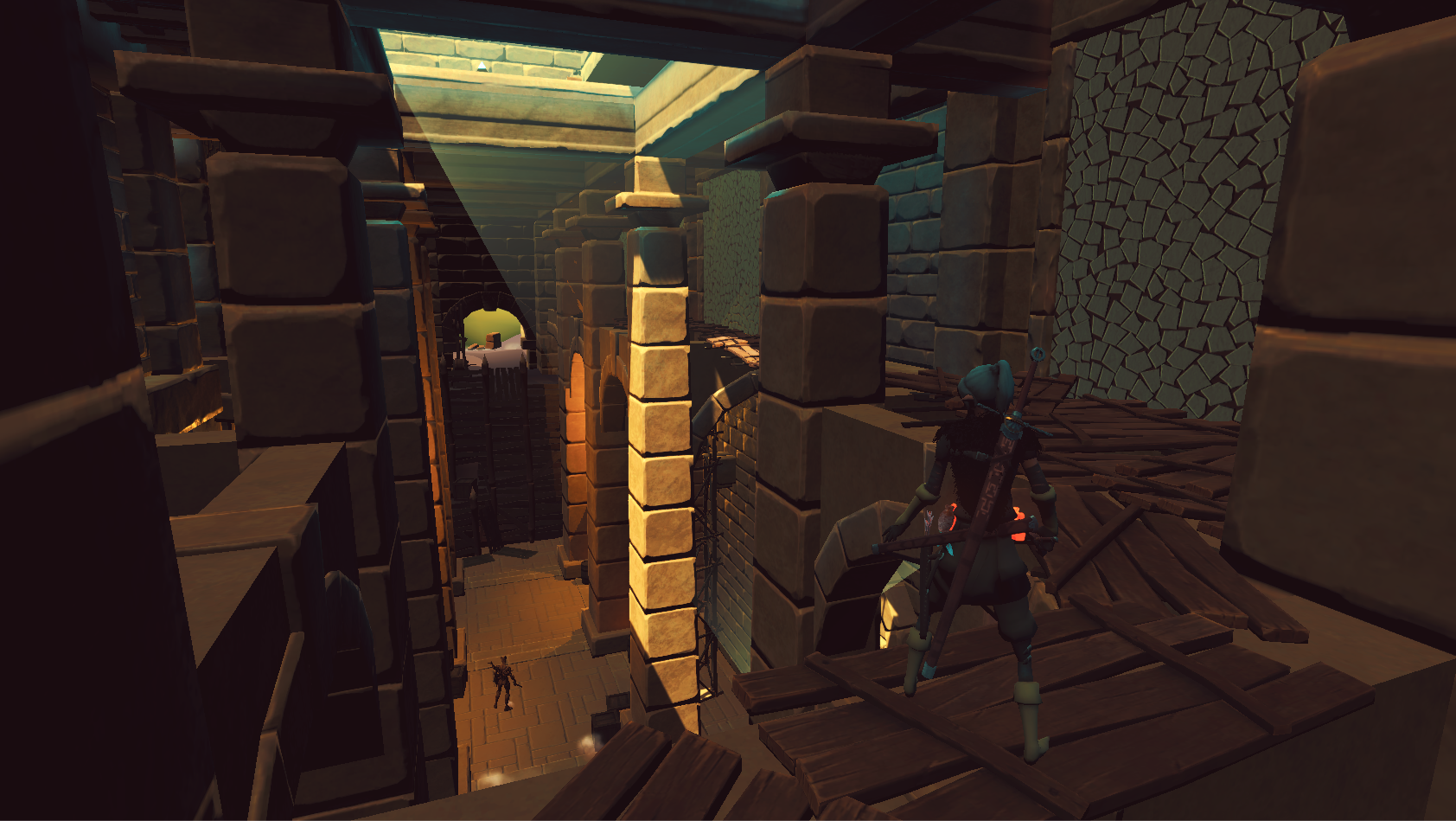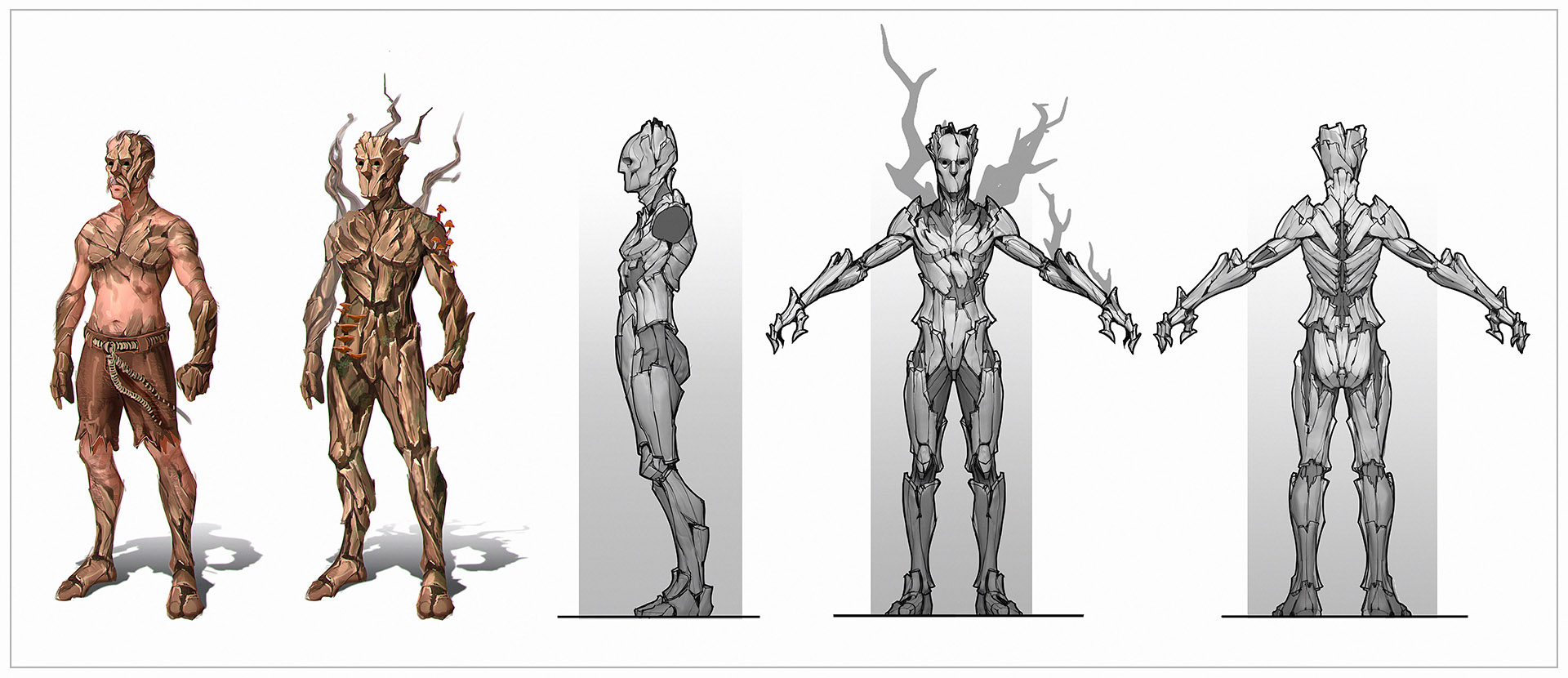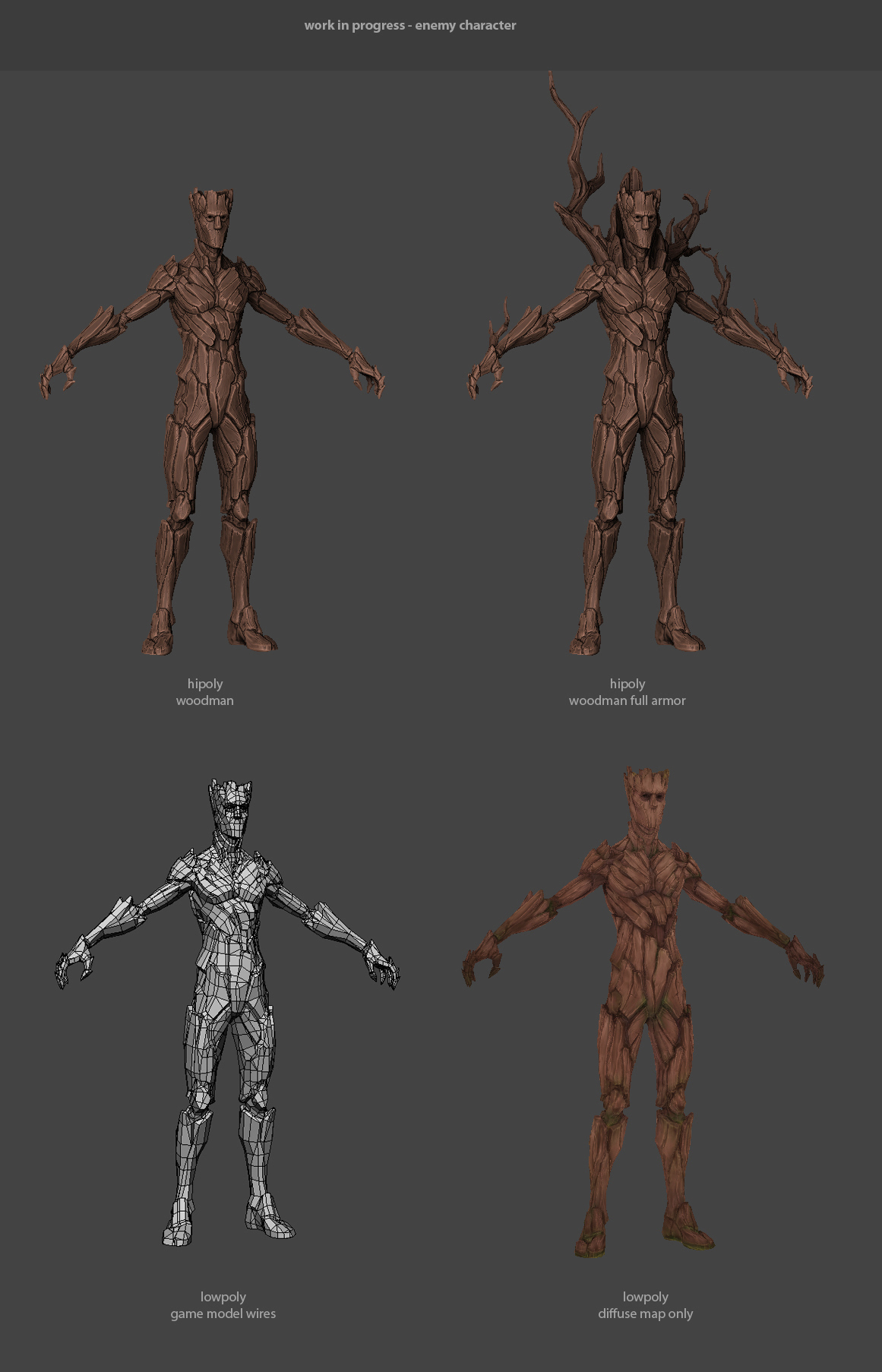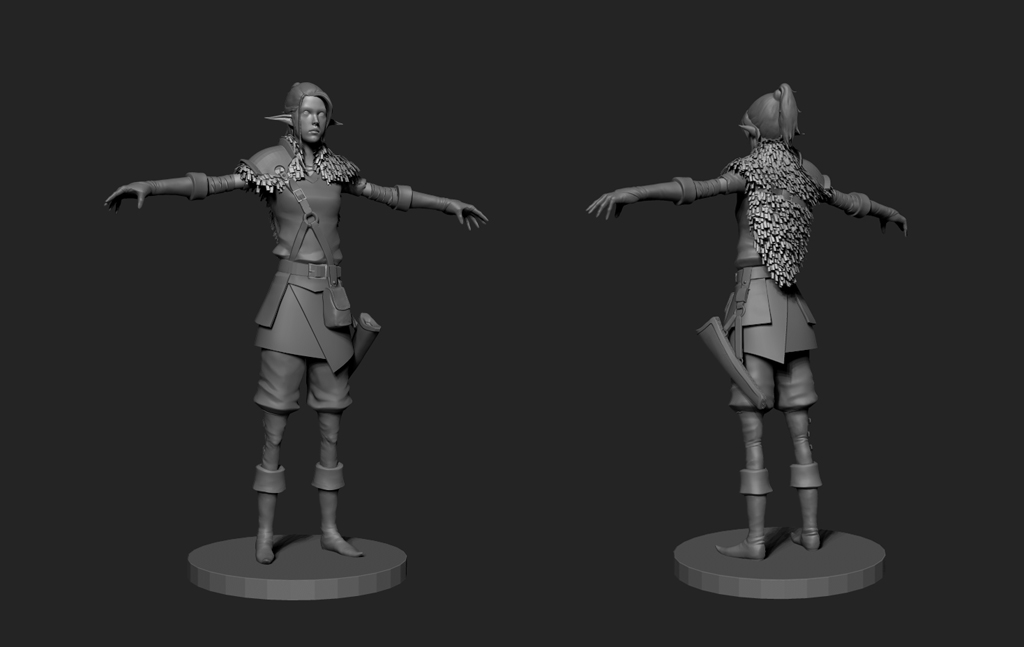Hi there!
This week we have some character concepts and models to show. It’s the most predominant enemy in the first area of the game.

Concept exploration and orthographic views.
For reasons we won’t spoil, some inhabitants of this world are mysteriously turning into wooden aberrations. The goal of the concept above was to visually establish two phases of this process. In the first iteration, the flesh turning into bark is supposed to be very apparent, while in the second one the body of the villager is already fully transformed. We really wanted it to be clear that these individuals were not always like this, hollow wooden creatures – they used to lead normal lives.
It’s pretty hard not to draw comparisons to the character Groot while designing treelike humanoids, but the way we tried to distance ourselves from that was to stick as close to the human silhouette and anatomy as possible. In essence, the transformation is material, and most of the human form is maintained.
We are a very small team, so we developed a strategy for the enemies to appear and feel different each time the player encounters them.
Most enemies have adaptive AI, and when the enemy is instantiated a Behavior Tree is assigned randomly.
For example, if a Defensive BT (Behavior Tree) is assigned, the enemy will have a shield and act more defensively, going around you and only attacking sometimes. If an aggressive BT is assigned, the enemy will not have a shield and will attack more, and so on.
It terms of visual presentation, randomly instantiated parts will be added to the enemy giving diversity to his silhouette. One interesting thing is that the more attached parts the enemy has, the higher his defense is.

In the past week André was freeing some work for Pichel and Tomé by 3D modeling an area and populating it with props already created. Next step will be texturing the terrain.

High poly and Low poly models.
Pichel was working on the enemy we showed above. UV mapping and low poly is done, and he’s close to finishing the additional parts.
Tomé is working on the 3D modules of the Ancient Ruins we showed in the previous blog post.




























